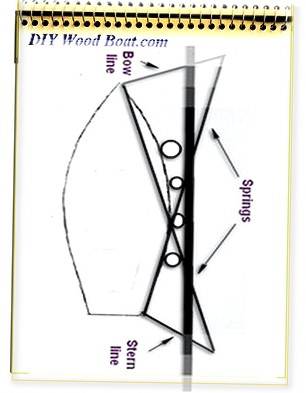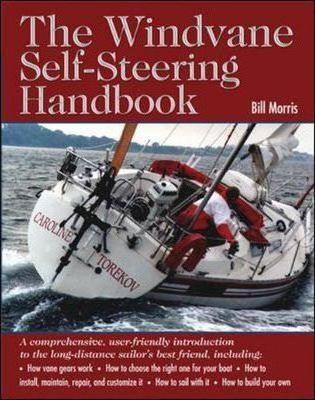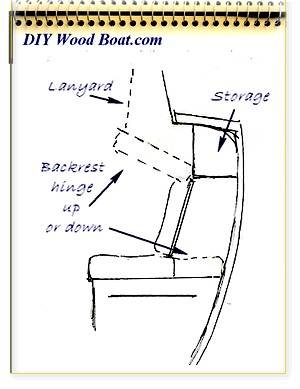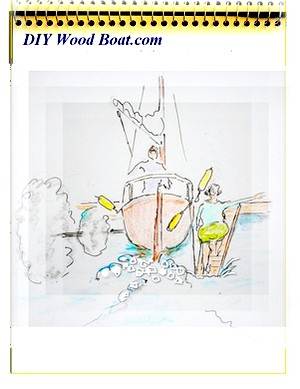- Home
- Your Boats
- Cold Water Boating
Cold Water Boating
‘Out of season’, cold water boating, especially when there are no other boaters around to assist, is the time when many fatal boating accidents occur.
The first 10 minutes after immersion are critical for a person in cold water and hypothermia will set in from 30 minutes to four hours after immersion, without rescue and proper first aid treatment unconsciousness follows with death not far behind.
And according to statistics most accidents occur in and around moorings and marinas.
The reasoning being that we tend to be more relaxed within the relative ‘safety’ of a harbour.
But cold water can be a real villain, anywhere, especially if we suddenly and unexpectedly fall in.
For those who still go boating when the water temperature is low, it is
important to know the dangers of cold water boating and prepare yourself
accordingly.
Effort should be given to whatever gets you out of the water fastest with the least amount of energy.
The Hazards
The first hazards in cold water are panic and shock.
The initial shock can severely strain the body and may produce instant cardiac arrest.
Within two minutes of immersion, an involuntary gasp reflex occurs.
If the head is not above water when the gasp reflex occurs, there is the possibility that the person will not resurface.
Survivors of cold water accidents talk of having the breath driven from them on first impact with the water.
Disorientation
may occur after cold water immersion and people have been observed
thrashing helplessly in the water for 30 seconds or more until they
could get their bearings.
In addition, immersion can quickly numb the extremities to the point of uselessness.
Your
cold hands may be unable to fasten the straps of your life jacket,
grasp a thrown rescue line, or hold onto your overturned boat.
Within minutes, severe pain clouds rational thought.
It can be a scary experience.
Preparation
Survival in the water depends largely on two factors: the temperature of the water and the behaviour of the victim.
There is little you can do about the temperature of the water, but the behaviour of the victim can be controlled.
Educating yourself on cold water survival can make the difference,
For example, physical exercise such as swimming causes the body to lose heat at a faster rate than remaining still in the water.
Blood is pumped to the extremities and quickly cooled.
Knowing this process is important because, suddenly immersed in cold
water, the boater faces a critical choice — adopt a defensive posture in
the water to conserve heat and wait for rescue, or attempt to swim to
safety.
In adopting a defensive posture try to remain as still as possible.
The
H.E.LP. (heat escape lessening posture) of holding your upper arms
tightly against your sides, thighs pressed together and raised to close
off the groin region, and huddling side-by-side if others are in the
water with you are the most effective methods of retaining body heat.
Research shows that heat loss is greatest from the chest and groin.
Should you decide swimming to shore is your best chance, a survival stroke should be used.
The
modified breast stroke, sidestroke, or elementary backstroke involves
less exertion than the typical overhand swimming or crawl stroke.
Visualisation
Visualization is proving to be an understandably popular mechanism with elite athletes eager for marginal gains.
It’s not hard to see how these methods from the elite world of sport can be appropriated or adapted for the rest of us.
Visualization can be used to help mentally, by encouraging anyone to prepare strategies for different scenarios, such as falling in the water.
For example, if you visualize falling in and how best to get out, you will not only prepare your reflexes for the eventuality you will envisage prior precautions such as fitting a boarding ladder and having spare dry clothing available.
Of course, no amount of visualization can make up for actual practice, preferably in warmer times.
Clothing
It is extremely difficult to dress properly for the cold.
Several layers of light clothing, of different weaves, offer better protection than a single heavy layer.
Next to a divers wet suit, wool clothing offers the best protection.
Wear a windproof top layer.
Swim only if it’s to get back to your boat or to safety and then only if
it’s within a short distance and you know for sure you can get aboard.
Should you be so unfortunate to find yourself in the water, try not to panic.
Think survival.
Keep movement to a minimum, and if you do have to tread water, do it slowly.
This will reduce heat loss and aid retention of air trapped inside your clothing, which can provide buoyancy and insulation.
Keep some spare dry clothing on board just in case.
Boarding Ladder
A boarding ladder, to be effective, should have the bottom rung well below the waterline.
The rigid variety are easier to climb than a rope ladder and they should be rigged to be easily deployed from the water.
Cold Water Sailing
Here are some simple safety steps that sailors can take to improve the survival chances of a person immersed in cold water while sailing.
• Insist that all crew wear lifejackets, no exceptions.
• Don lifejackets on the dock before boarding, and keep them on during the entire voyage.
• They will keep the head out of the water during the gasp reflex, and keep you afloat when the muscles stop working.
• Before you leave the dock for the first time, make sure that
all safety gear is onboard, even if it just a trip from the yard to your
mooring.
• On the first sail of the season practice a man
overboard drill, practice as if the person in the water won’t be able to
climb a swim ladder, and may not be able to attach the sling.
•
Know how to use the radio or even your mobile phone to call emergency
services. In some areas operators want to enter a street address to
direct land-based emergency crews, this could be a problem if you are on
the water, know the procedure in your area.
- Always tell someone where you are going and when you expect to return.














